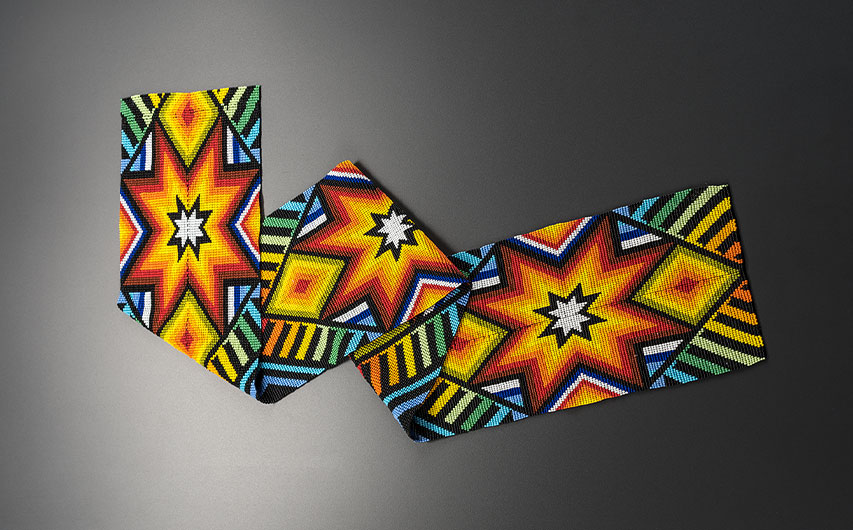
Unas de las artesanías más representativas del pueblo indígena Kamëntsá, que habita en el Valle del Sibundoy, Putumayo, son las piezas tejidas con chaquiras. Collares, pulseras, carteras, llaveros, entre otros, han sido elaborados con destreza por manos artesanas durante siglos. Para los Kamëntsá, tejer es una forma de escribir, de pensar y de relacionarse con el mundo. Las artesanías que produce esta comunidad giran en torno a la tejeduría. En el vaivén de los hilos, las lanas, las guangas y las chaquiras está escrito el legado de los mayores y en sus artesanías se plasma su relación con el territorio y la naturaleza, que es su fuente primordial de inspiración.
Tradicionalmente, las piezas tejidas con chaquira hacen parte de la vestimenta tradicional y según sus colores e imágenes son energía para las personas que las llevan y también sirven como protección, abundancia y sanación. Así, el tigre da protección, el colibrí trae las buenas noticias y el oso trae la fuerza.
Some of the most emblematic crafts of the Kamëntsá people, who live in Valle del Sibundoy, Putumayo, are their chaquira-bead woven wares. For centuries, necklaces, bracelets, among other wares, have been skillfully made by their craftspeople’s hands. Weaving is a form of writing, thinking, and relating to the world for the Kamëntsá. Every ware crafted by this community revolves around weaving. The legacy of the elders is written in the swaying of threads, wools, guangas, and chaquira beads. Their relationships with nature, which is their main source of inspiration, and the land are imprinted into their crafts.
These chaquira-bead woven wares are part of their traditional attire. According to their colours and images, these garments give a particular energy to the people who wear them: they can protect them, attract abundance for them, and even heal them. Thus, tigers protect, hummingbirds bring about good news, and bears give off strength.
Relacionados: Oficio artesanal; Tejeduría; Chaquiras; Artesanía indígena